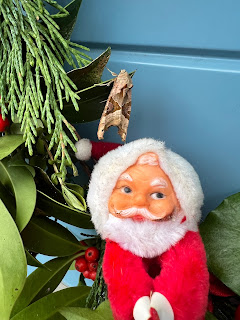Having been preoccupied with other activities for much of the year, I am now getting around to entering my records, firstly into my own database and then then I'll transfer them into iRecord by spreadsheet upload. This is always an opportunity to review the quality of each of the records as I proceed.
My database flags various kinds of information as I make each entry: not just if a species is unusual for the area (in which case I will add a photo if I have one and carry across any information I wrote in my notebook about about how I came to the ID), but also it compares the record against the quoted flight periods in the field guides and against my own earliest/latest records.
While doing this, I came across a situation for which I'd like some guidance as I haven't managed to find anything in writing, but I'm sure it's not a unique situation:
If I find a dead adult moth, I haven't noticed an iRecord field designed for this. The "stage" field has various permitted values ("adult", "larva" and so on), but that list doesn't include anything that would cover a dead individual. So do I just add "dead" in the comments, or is there another way to record it or should it be omitted entirely?
Flight period information is important and I want to avoid the risk of making records that provide misleading data for this. Where a dead individual has just been found in a moth trap, one can be reasonably sure that it was alive recently (some caveats apply). But if found indoors or in certain other circumstances, the adult could have died weeks or months earlier.
I recall - and have re-found - guidance on how to record moths that were reared from early stages because emergence dates can be affected by the artificial rearing environment. However, I can't find similar guidance for recording dead individuals where there is a possibility that they have been dead for some time.
In the particular case that triggered this question, I have plenty of records of the living adults, so omitting a record of a couple of dead individuals would have no effect on distribution or abundance information, but there could be circumstances in which the discovery of a dead individual is of significance and making a proper record of it is important - but how?
Tim Arnold
Newton Longville, Bucks




































.jpg)












.JPG)
.JPG)